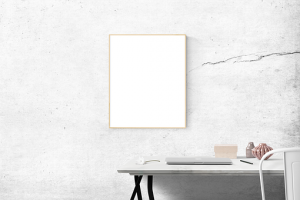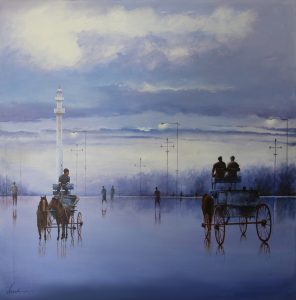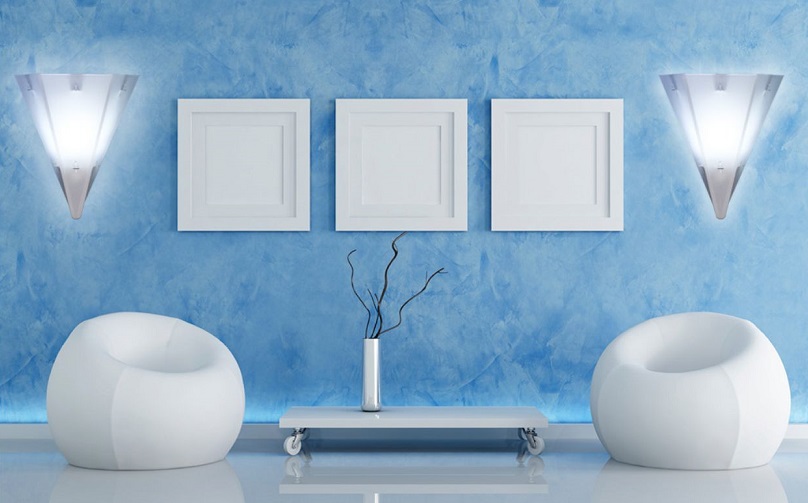When we were kids – it was easy. We’d pin up posters of our favourite heroes and celebrities. Or have pictures of friends. Or even show off self-created art-work.
But now that we’re not kids anymore, we have a home to decorate with walls that need to make a statement. Nothing brings more interest or life to a space than a fascinating display or an unusual composition of paintings. However, even the best of us find the idea of purchasing a painting for the home intimidating. What to choose? Where to place it? How much to spend? Where to buy from?
So if you’d like to crack the code – read on for our tips and tricks on buying great paintings for your home.
Do your Research
Search different types of paintings ! Educate yourself ! Look at the different forms and styles of art and jot down what you like and what you don’t. This will give you an idea of your personal taste. It may not be a good idea to take others opinions during this stage. Choosing the right piece is a very personal decision, and you may become overwhelmed by other people’s opinions.
Choose your Location
 Look around your home. Do remember that a painting can be displayed all around your home and not just on walls. Consider floor corners, bed heads, empty voids, shelves and table tops. Walk around and identify empty spaces that you think will be a good space to showcase a piece of art. You must also sit down and view areas at that level. That will give you an idea about how the painting may be positioned in that space. Remember – it doesn’t just have to be found high on walls, it can also be placed low, leaning against walls.
Look around your home. Do remember that a painting can be displayed all around your home and not just on walls. Consider floor corners, bed heads, empty voids, shelves and table tops. Walk around and identify empty spaces that you think will be a good space to showcase a piece of art. You must also sit down and view areas at that level. That will give you an idea about how the painting may be positioned in that space. Remember – it doesn’t just have to be found high on walls, it can also be placed low, leaning against walls.
Take Care of your Space
Once you have chosen the space for your piece – ensure the space is flawless – with no marks or cracks. If the space or niche is dark, consider placing a light or bright coloured work in that space. And vice-versa. The amount and quality of your available space will help you decide whether you need a single piece or a collection. You may wish to cut out a piece of cardboard in your preferred size and shape and position it within your space to visualise how it will look. This may also help you decide on whether you’d like a collage of paintings in similar or varying sizes.
Decide on a Budget
Once you’ve decided on where you’re going to place your painting, and have a rough idea of the size or scale – these factors can help you determine a budget. It is wise to set a budget when buying art. Going over-budget is not a great idea as you could regret it, later on.
Choose a Colour, Style or Theme. Or an Inspiration.
Refer back to your notes on the kind of paintings that you liked and disliked. Keep that in mind and evaluate the works you see. Is there anything that stands out ? Remember the space where you want your choice to be displayed. You might already have a theme running through your room. Do you want your choice to complement it ? Or create a contrast with something that’s the opposite ? One of artistic partners – Durgesh Birthare, puts forward an interesting perspective as he believes that a buyer must understand the journey or the story of the artist and what she or he is inspired by. Says Durgesh “If they connect to the thought process of the artist, the painting would always serve as motivation or inspiration.”
Buy what you Love
This is perhaps the most important thing to keep in mind when purchasing paintings. Choose one that reflects your personal taste and matches your personality. It should be something that creates emotional responses, make you think and ask questions. If the piece you’re staring at brings back happy associations and memories then it’s perfect for you. Even if it speaks to you but you can’t quite figure out why, that’s still going to be a better purchase than a piece that someone told you was ‘nice’ – but you personally felt no connect with. According to Prashalee Gaikwad, Fine Art Painter, the single most important factor to keep in mind while choosing a painting is one’s personal preference and understanding.” If a painting resonates with you and your thinking go ahead and buy it, ” says Prashalee.

Light it Up
A painting can look its best when it is properly lit. You can use artificial gallery style lighting or natural light, it just depends on the space. Remember to not keep pieces in direct sunlight, as it will spoil your art over time.
Frame it. Or Don’t.
Once you have bought your art , you need to consider framing it. A large canvas piece can be left without a frame – as most artists continue to paint around the edges of the canvas. If you do decide to frame, ensure that frame colours do not overpower the colours in the painting. Choose neutral colours as bright whites can overpower the work. Do remember then that art is a personal choice and can be interpreted in any way. Everyone’s view on art is personal and opinions can be different. Do remember to take your time, stay within your means, figure out what you like, then consider it for your space. If you can make sure every piece of art you have – speaks to you personally in that way, you will be able to create a beautiful art collection of your own. Our partner artist Bahadur Singh sums it up in a nutshell – “According to me it’s the story behind the artwork, my connection with that piece and bright colours. These three factors help me decide when I choose a particular painting. It also must create positive energy each time I look at it.”
Feeling inspired ? Shop now on https://www.worldartcommunity.com/painting/.
Durgesh Birthare calls himself an experimental artist who tries to bring out the hidden aspect of nature in a simple form. Explore his work here
Prashalee Gaikwad – is a Fine Art Painter and Owner of the Brand Point of Hue, specialising in soulful, contemporary acrylic paintings. Explore her work here
Bahadur Singh seeks to express his feelings on canvas with the help of endless colours. He loves to paint nature based subjects. Explore his work here
